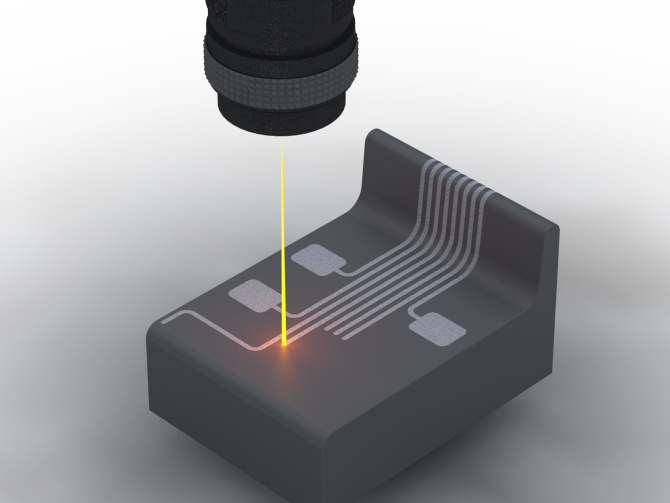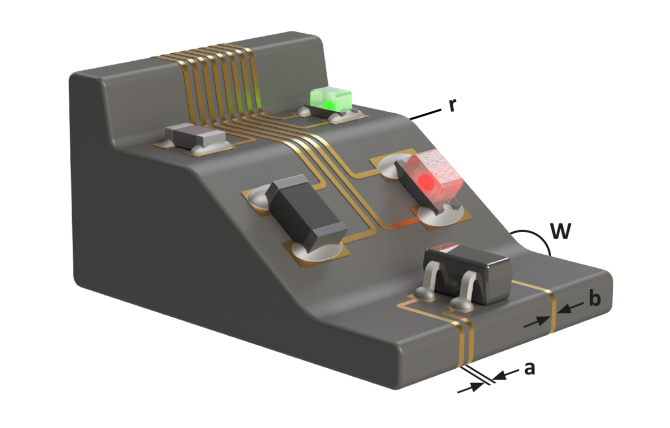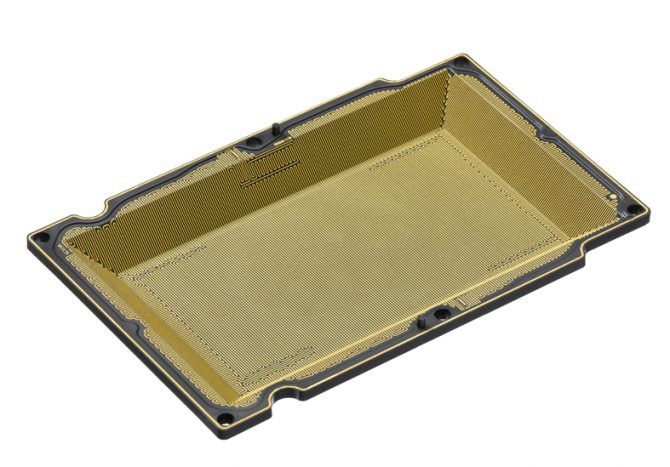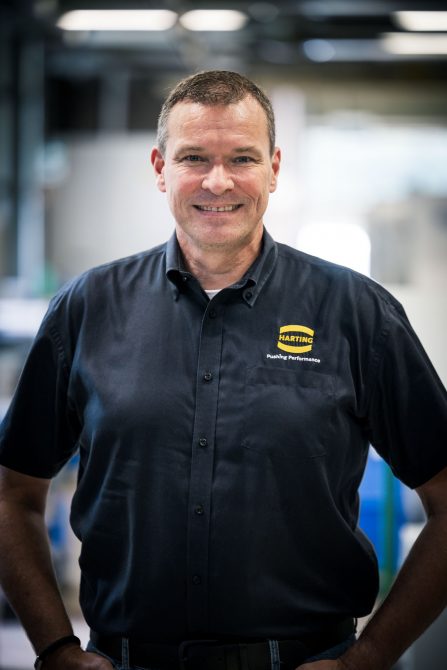Electronic assemblies without PCBs – Electronic Products & TechnologyElectronic Products & Technology
Laser direct structuring (LDS) is a particular achievements tale. For just about 20 many years, it has been feasible to apply digital conductor paths right on to plastic components for the duration of series manufacturing. LDS permits the generation of electronic assemblies with adaptable geometric designs. This procedure allows digital products and solutions (these types of as smart telephones, sensors or medical units) to come to be even smaller and extra highly effective. Automatic producing procedures also make this approach more economically attractive.
There is much less and considerably less area readily available for digital assemblies, so solutions are wanted which exchange regular printed circuit boards. LDS enables even further miniaturization and would make more and more complicated geometric models possible. This is a secure and dependable system that has recognized alone in excellent-vital sectors these kinds of as medical technologies or safety-applicable elements for the automotive sector.
LDS process enables three-dimensional assemblies
Immediate laser structuring enables 3D-MID (Mechatronic Built-in Products) assemblies to be produced. When utilizing 3D-MID, electronic parts can be equipped straight on to a three-dimensional base system, without the need of circuit boards or connecting cables. The foundation body is produced applying an injection moulding process, whereby the thermoplastic materials has a non-conductive, inorganic additive.

The composition of the conductor route is applied making use of the LDS approach.
LDS allows electronic assemblies to be manufactured in versatile geometric designs. Wise telephones, hearing aids and wise watches are turning out to be more compact and far more impressive thanks to this procedure. Source: Harting
The additives in the substance are “activated” by direct laser structuring so that the plastic product can accommodate the electrical conductor paths. The laser beam writes the locations meant for the conductor paths and creates a micro-tough structure. The released metal particles variety the nuclei for the subsequent chemical metallisation. In this way, the electrical conductor paths are utilized to the locations marked by the laser. The other locations of the three-dimensional base entire body stay unchanged. The plastic ingredient can then be assembled in conventional SMD procedures very similar to a common PCB. It is also ideal for soldering in a reflow oven.
Flexible software of laser technological innovation
As a single of the largest suppliers of 3D-MID parts outdoors of Asia, HARTING makes use of substantial-functionality laser devices for the LDS method, with 3 lasers performing in parallel, every single offset by 45 levels. Thanks to an additional axis of rotation, factors can be processed by the laser at the same time from all sides (360 levels). This technology allows versatile geometric styles, this kind of as reflector shells or LED lights, to be designed. Even with the negligible conductor path thickness of 16 to 20 μm, the conductor paths are however acceptable for demanding automotive parts or for purposes with currents up to 10 A – for illustration for heating coils in cameras which are used to reduce the optics from fogging up

Minimal distances involving the conductor paths (a): 50 – 150μm. Minimum width of the conductor paths (b): 50 – 150μm Radius (r): .2mm. Supply: Harting
Repeated alterations through the electronics advancement period or new factors with modified proportions can direct to expensive adjustments through common PCB creation. The laser structure, in distinction, can be adapted quite flexibly by working with the parameters of the laser’s manage software. No variations in the injection moulding are expected for this.
The generation of prototypes working with LDS is also less difficult in comparison to typical processes. HARTING can deliver the plastic foundation body using LDS-appropriate content and 3D printing. Injection moulding can also be utilised with cheap prototype instruments.
New developments in the LDS process
Many features of LDS technologies have been enhanced and further more created around the past few decades.
- The performing location of the laser has been enlarged from 160 x 160 x 80 mm to 200 mm x 200 mm x 80 mm, so enabling a better packing density and the processing of even bigger factors.
- The doing work pace of the laser can be doubled to 4 m/s by optimizing the servo units and mirrors which guidebook the laser beam, thereby noticeably lessening the processing time.
- The improvement of the optics enables the use of a laser with a diameter of 100 μm and a laser with a wonderful concentrate of 50 μm for processing even smaller sized buildings.
HARTING is the only 3D-MID manufacturer in the planet that has a laser method with 3 fantastic concentration optics of 50 μm. Even lesser conductor route gaps can be attained thanks to this great concentrate laser. Hence, many conductor paths can be produced on the similar part and a increased packing density can be applied. This is applied for security technological innovation, amongst other matters, mainly because the closely spaced and intertwined conductors are able of triggering basic safety alarms from even the smallest actual physical interference.
Advances in elements and economics
Only specially selected thermoplastics are qualified for the LDS course of action these are available from stock. The course of action can be further improved with customer-distinct changes to the plastic material:
- HARTING makes use of a course of action which provides LDS additives to non-licensed resources to make them MID-compatible.
- Distinct RAL or Pantone colours can be realized with MID plastics by applying colour pigments and special LDS additives.
- By deciding upon acceptable additives, distinctive RF attributes can also be applied, based on the frequency variety.

Electronic components – these types of as LEDs, ICs, photodiodes and sensors – can be hooked up straight on to the part provider. The assembled ingredient carriers can then be processed as regular SMD parts. Source: Harting
To even more boost the price-performance of the production method, HARTING depends on automatic robotic units. The LDS laser system is equipped with a rotary indexing table so that a element can be inserted or taken off while one more part is still staying processed. The in-feed and unloading treatments are automated by HARTING using robotics. This will increase throughput and autonomy, though also enabling integration into automated generation processes. An more automation step is furnished in the course of the injection moulding process. Right here, as well, a robotic usually takes above the elimination of the injection moulded parts. The use of robotics also improves the precise reproducibility of the processes and, therefore, general product excellent.
Extra expansion for 3D-MID

The 3D-MID caps defend the electronics from unauthorized access both equally mechanically and electronically. A highly precise meandering construction detects each individual entry, no issue how small, and as a result helps prevent theft. Source: Harting
HARTING stories improved desire for MID initiatives and has further more expanded the 3D-MID division by investing in machinery and by acquiring a competitor’s company. Impressive in-household goods are also contributing to more progress. HARTING has made a alternative based mostly on 3D-MID technologies which replaces adaptable PCBs with a component provider. Alternatively of making use of a flex-PCB, the component provider can be equipped directly with digital factors, therefore preserving up to two thirds of the price tag.
—————————————-
About HARTING 3D-MID
HARTING 3D-MID is supplying the total price chain for 3D-MID technologies from a solitary source, together with development/prototyping of customer-specific products, injection moulding, laser immediate structuring, metallization, assembly and connection technological know-how, as very well as last inspection. Its core business enterprise is the generation of mechatronic parts for car production, market, medical technology and sensor systems.

Dirk Rettschlag, challenge manager & IE MID at Harting MID.






